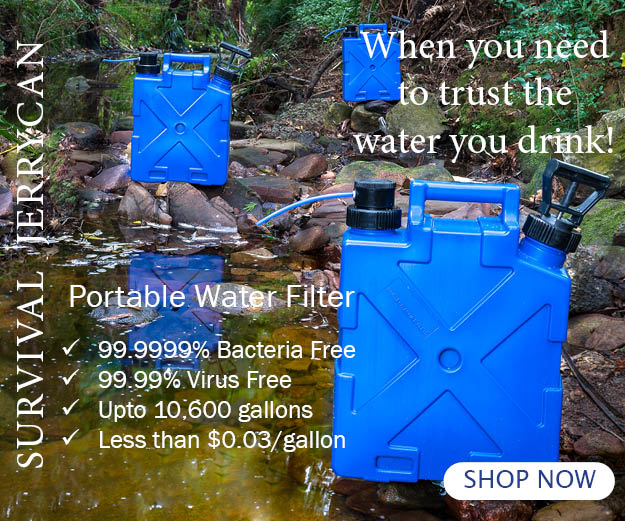Before You Buy, What Kind of Water Filter Do You Need – Reverse Osmosis or Microfiltration?
Reverse osmosis is basically the process of separating contaminated water into clean and unclean water using a semi-permeable membrane to filter out waterborne bacteria and contaminants.
Ideal for purifying seawater and brackish water, it has been extensively used in industry and smaller units for boating or fishing trips. Purification is achieved by forcing the water, under pressure, through the membrane and effectively dividing it into a pure waterside and a contaminated waterside.
For best reverse osmosis water purification results, several stages are required – 2 levels of sediment filter, 1 activated carbon filter (it’s essential to remove chlorine as it damages the unit), the reverse osmosis cartridge filter, ideally followed by an ultra-violet lamp to disinfect any remaining microbes.
The reverse osmosis membrane needs to be flushed reasonably regularly to stop the formation of scale, and very often, pre-filtering by a water softening agent, as well as a carbon-based product to reduce chlorine, may be required. While reverse osmosis drinking water systems are effective against most microorganisms, they may not filter out protozoa such as Cryptosporidium.
In independent testing, on a scale of 1 to 5, where 1 is the most effective, ( see comparison chart) the microfiltration membrane scored a 1, while the reverse osmosis water filter scored a 2. That one place could mean the difference between allowing a small amount of contamination through or none at all.
As a point of vital interest – alongside the results for reverse osmosis, bottled water purchased in developing countries scored a 3, possibly due to two critical risks with bottled water purchased overseas
- the risk the water has come from local water supplies, either newly bottled or an old bottle refilled, and
- the proven build-up of bacteria in water bottles that have been transported long-distances and in high temperatures.


